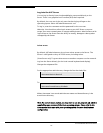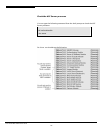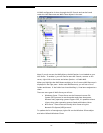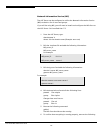
NAS CONFIGURATION
Network Attached Storage, or NAS, is another piece of the storage
management picture.
NAS refers to storage and data that can be accessed directly from the storage
network and represents a quick and easy way to add general purpose,
shareable, storage space for users and groups. With NAS, users can access data
and storage via a network interface using protocols including NFS (Network
File System) and CIFS (Common Internet File System).
NAS contrasts with SAN in several key ways:
• NAS offers shared files/folders instead of devices (SAN).
• SAN storage provides block level data storage and is ideal for high
performance, low latency applications, such as databases.
• NAS uses file-based access and is ideal for providing data and file
sharing for users and groups.
Implemented together, SAN and NAS help to reduce costs and simplify storage
and data management.
Before ASC, a NAS box was a separate storage device with a built-in network
interface, network operating system, and storage allocation software (basically
a simplified, dedicated file server). The NAS box was plugged directly onto the
corporate LAN, making itself accessible with one or multiple “file shares”. Users
and groups were assigned read/write privileges and a space quota. As the
number of users grew, and as free space became low, additional NAS boxes
could be plugged in.
This architecture has become more of a problem than a long-term solution.
Traditional NAS boxes become yet another piece of hardware requiring their
own backup, space allocation, and management GUI.
In ASC, NAS is simply another network storage service on your storage
network. NAS uses the same storage devices that SAN uses, eliminating the
need for separate devices. Another advantage of providing NAS within ASC is
that the advanced storage options such as snapshot and mirroring are
uniformly applied to both SAN and NAS resources under a single set of storage
management policy.
The NAS clients can be located anywhere on the network, as long as they have
access to the ASC Server.
Acer Altos® NAS 700 Solution Guide
118


















